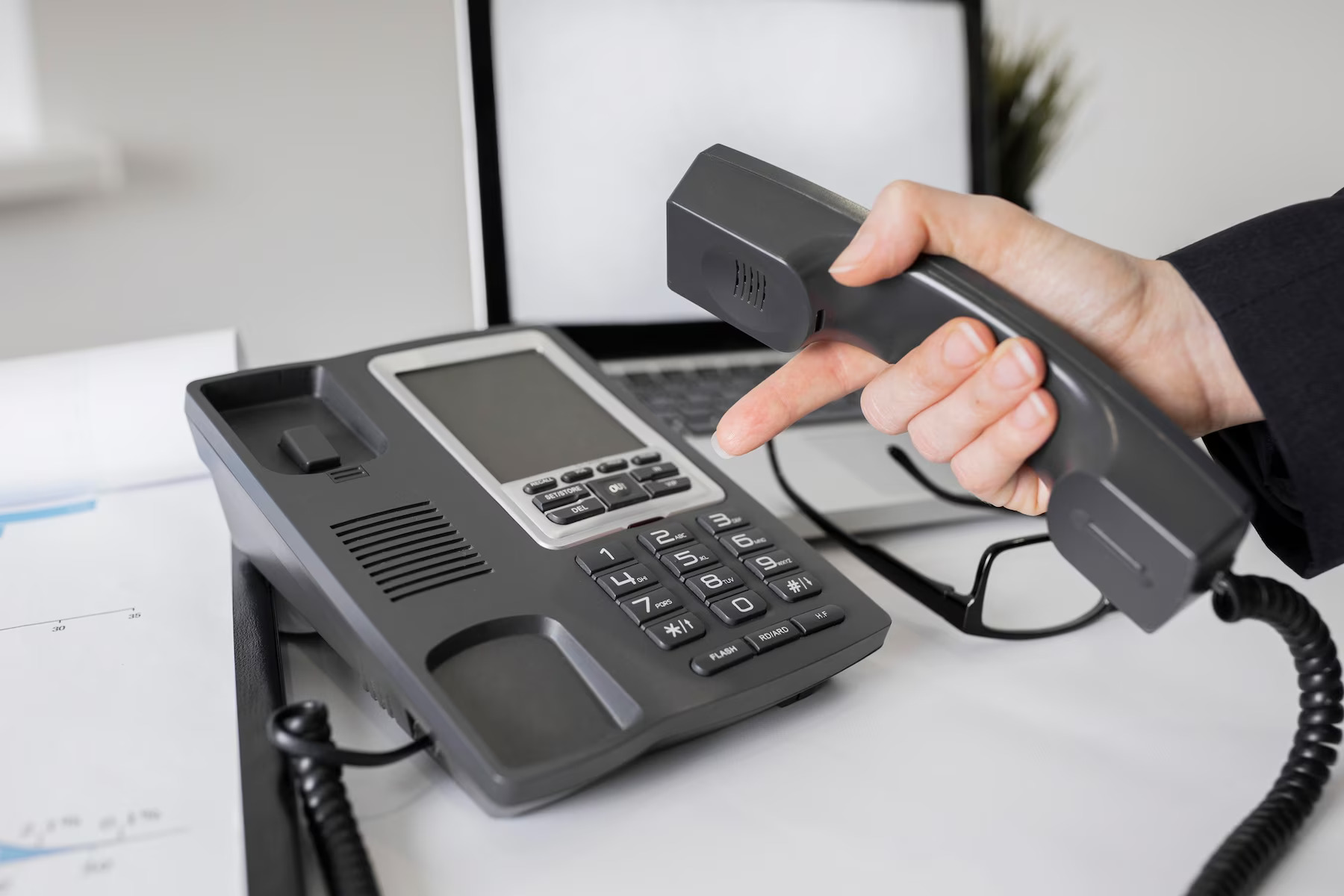VoIP (Voice over Internet Protocol) has revolutionized communication, allowing businesses and individuals to make calls over the Internet instead of traditional phone lines. While VoIP offers numerous benefits, such as cost savings and flexibility, it’s not immune to issues that can disrupt call quality and reliability. here we describe everything about the Most common VoIP issues and provide troubleshooting tips to help you overcome them.
Important Components of VoIP
VoIP allows voice data to be transmitted over the internet, converting analog audio signals into digital packets. These packets are then sent across the network to the recipient, where they are reassembled into audio signals. To get started with VoIP, you’ll need the following.

1. Fast Internet Connection
A reliable and stable internet connection is crucial for VoIP calls. Make sure you have sufficient bandwidth and low latency to avoid audio quality issues.
2. Reputable VoIP Service Provider
Choose a reputable VoIP service provider that offers reliable connectivity and excellent customer support. This is an important thing that you need to follow when selecting VoIP Services from Providers.
3. VoIP Phone or Softphone
Depending on your preference, you can use a physical VoIP phone or a software-based softphone on your computer or mobile device. Your Phone Software must be updated and feature loaded.
4. Router
A router acts as a bridge between your local network and the internet. Proper router configuration is essential for VoIP performance.
Troubleshoot VoIP: How to Fix the VoIP Problems

VoIP technology has its share of challenges, but most issues can be resolved with the right troubleshooting approach. By identifying and addressing these common problems, you can ensure a smooth and uninterrupted communication experience. here are some troubleshooting processes for various VoIP issues.
1. Internet Connection Problems
A stable and high-quality internet connection is vital for successful VoIP communication. Several factors can affect your internet connection and lead to VoIP issues. Some of the common internet connection problems and their troubleshooting steps.
Insufficient Bandwidth
Insufficient bandwidth can result in poor audio quality, delays, and dropped calls. To troubleshoot bandwidth-related issues:
- Check your internet plan to ensure it provides sufficient bandwidth for VoIP.
- Disconnect any unnecessary devices that may be consuming bandwidth.
- Prioritize VoIP traffic by enabling Quality of Service (QoS) settings on your router.
Network Congestion
Network congestion occurs when there is heavy traffic on your internet connection, leading to packet loss and degraded call quality. Here’s how you can address network congestion:
- Check if other devices or applications on your network are consuming excessive bandwidth. Close or limit their usage during VoIP calls.
- Upgrade your internet plan to a higher bandwidth tier to accommodate increased traffic.
- Consider implementing traffic shaping or bandwidth management techniques to prioritize VoIP traffic.
Firewall Configuration
Firewalls are essential for network security but can sometimes interfere with VoIP traffic. To ensure proper firewall configuration:
- Allow VoIP traffic on specific ports by creating firewall rules or opening port forwarding.
- Consult your VoIP service provider for the recommended firewall settings.
- Consider using a Session Border Controller (SBC) to manage firewall traversal for VoIP traffic.
2. Audio Quality Issues
Clear and high-quality audio is crucial for effective communication. Various factors can affect VoIP audio quality, leading to echoes, delays, jitter, and background noise. Explore these audio quality issues and their troubleshooting methods.
Echoes and Delays
Echoes and delays can make conversations difficult and frustrating. To troubleshoot these issues:
- Check for any acoustic issues in your physical environment, such as reflective surfaces or speakerphone interference.
- Reduce the microphone and speaker volume to minimize echo.
- Implement echo cancellation technologies on your VoIP system or hardware.
Jitter and Packet Loss
Jitter refers to the variation in packet delay, while packet loss occurs when packets fail to reach their destination. To mitigate jitter and packet loss:
- Optimize your network for VoIP traffic by minimizing latency and packet loss.
- Enable jitter buffers on your VoIP devices to compensate for packet delay variations.
- Consider using a Virtual Private Network (VPN) to create a secure and dedicated network for your VoIP traffic.
Background Noise
Background noise can be distracting during calls and degrade the overall audio quality. To minimize background noise:
- Use noise-canceling headsets or microphones to filter out ambient sounds.
- Optimize the placement of your VoIP devices to reduce exposure to external noise sources.
- Adjust the microphone sensitivity to focus on the primary audio source and minimize background noise pickup.
3. Call Connectivity Problems
Call connectivity problems can disrupt communication and hinder productivity. Common call connectivity issues and their troubleshooting techniques.
Dropped Calls
Dropped calls can be frustrating, especially during important conversations. To troubleshoot dropped calls:
- Check your internet connection stability and ensure sufficient bandwidth.
- Verify that your router is not experiencing any issues and is properly configured for VoIP traffic.
- Contact your VoIP service provider to investigate any network or server-related issues.
One-Way Audio
One-way audio occurs when only one party can hear the other during a call. To address one-way audio issues:
- Check if your firewall or router settings are blocking incoming or outgoing VoIP traffic.
- Ensure that your NAT (Network Address Translation) settings are correctly configured.
- Contact your VoIP service provider to troubleshoot any network routing or configuration problems.
Call Failures
Call failures can happen due to various reasons, such as incorrect dialing, network issues, or problems with the recipient’s phone system. Here are some troubleshooting steps for call failures:
- Double-check the dialed number for accuracy and make sure you’re using the correct format.
- Ensure that your internet connection is stable and your VoIP service is active.
- Contact the recipient’s phone system administrator or your VoIP service provider to investigate any issues with call routing.
4. Hardware and Device Troubleshooting
Troubles with your VoIP hardware and devices can significantly impact call quality and reliability. Few common hardware-related issues and their troubleshooting methods.
Router Issues
Routers play a vital role in connecting your network to the internet and can sometimes cause VoIP problems. Here’s how to troubleshoot router issues.
- Restart your router to refresh its configuration and resolve temporary issues.
- Update your router’s firmware to the latest version to ensure compatibility with VoIP technology.
- Consult your router’s user manual or the manufacturer’s website for specific VoIP-related troubleshooting tips.
Phone Configuration
Improper phone configuration can lead to various VoIP issues. To troubleshoot phone configuration problems.
- Verify that your phone is properly registered with your VoIP service provider.
- Double-check your phone’s settings, such as codecs and audio preferences.
- Contact your VoIP service provider or refer to the phone’s user manual for detailed configuration instructions.
Faulty Equipment
Faulty or outdated equipment can cause a wide range of VoIP problems. If you suspect faulty equipment, try these troubleshooting steps.
- Test your VoIP system with different devices to isolate the issue.
- Check for any physical damage or loose connections in your VoIP equipment.
- Contact your VoIP service provider for assistance in diagnosing and resolving hardware-related problems.
5. Security and Privacy Concerns
As with any internet-based technology, security, and privacy are essential considerations in VoIP communication. Some common security and privacy concerns and how to address them.
Call Eavesdropping
Call eavesdropping refers to the unauthorized interception of VoIP calls. To enhance the security of your VoIP communication:
- Encrypt your VoIP traffic using protocols like Transport Layer Security (TLS) or Secure Real-time Transport Protocol (SRTP).
- Use strong and unique passwords for your VoIP accounts to prevent unauthorized access.
- Regularly update your VoIP software and firmware to patch any security vulnerabilities.
Identity Spoofing
Identity spoofing involves impersonating another person or entity during VoIP calls. To prevent identity spoofing:
- Enable authentication features, such as Secure SIP (SIPS) or Secure RTP (SRTP).
- Implement call authentication protocols like SIP Identity and Secure Telephone Identity (STI).
- Educate your users about social engineering tactics used in identity spoofing attacks.
Unauthorized Access
Unauthorized access to your VoIP system can lead to call tampering or toll fraud. Here’s how you can secure your VoIP system:
- Implement strong user authentication mechanisms, such as two-factor authentication (2FA).
- Restrict access to administrative functions and sensitive features based on user roles.
- Monitor call records and usage patterns for any suspicious activities.
FAQs
VoIP call quality can be affected by various factors, such as insufficient bandwidth, network congestion, or audio settings. Ensure that you have a stable internet connection, optimize your network for VoIP traffic, and adjust audio settings to improve call quality.
To improve VoIP call quality, you can take several steps:
Check your internet connection for stability and sufficient bandwidth.
Optimize your network for VoIP traffic by implementing Quality of Service (QoS) settings.
Use high-quality VoIP hardware and devices.
Minimize background noise and echo by using noise-canceling equipment.
Dropped calls can be caused by factors such as network instability, insufficient bandwidth, or issues with your VoIP service provider. Ensure that your internet connection is stable, upgrade your bandwidth if necessary, and contact your service provider to investigate any network or server-related problems.
One-way audio can occur due to firewall or router settings, NAT configuration issues, or problems with your VoIP service provider. Check your firewall and router settings, ensure correct NAT configuration, and contact your service provider for assistance with network routing problems.
If your VoIP phone is not working, check the phone’s registration status with your service provider, verify the phone’s configuration settings, and ensure a stable internet connection. If the issue persists, contact your service provider for further troubleshooting.
To ensure the security of your VoIP calls, you can:
Encrypt your VoIP traffic using protocols like TLS or SRTP.
Use strong and unique passwords for your VoIP accounts.
Regularly update your VoIP software and firmware.
Implement authentication mechanisms and call authentication protocols.
Conclusion
VoIP offers incredible communication capabilities, but it’s essential to be prepared to troubleshoot common issues that may arise. By understanding the root causes of problems and following the troubleshooting steps outlined in this guide, you’ll be well-equipped to maintain a reliable and high-quality VoIP communication system. Regularly update your hardware and software, optimize your network, and ensure proper configuration for a seamless VoIP experience.
































































